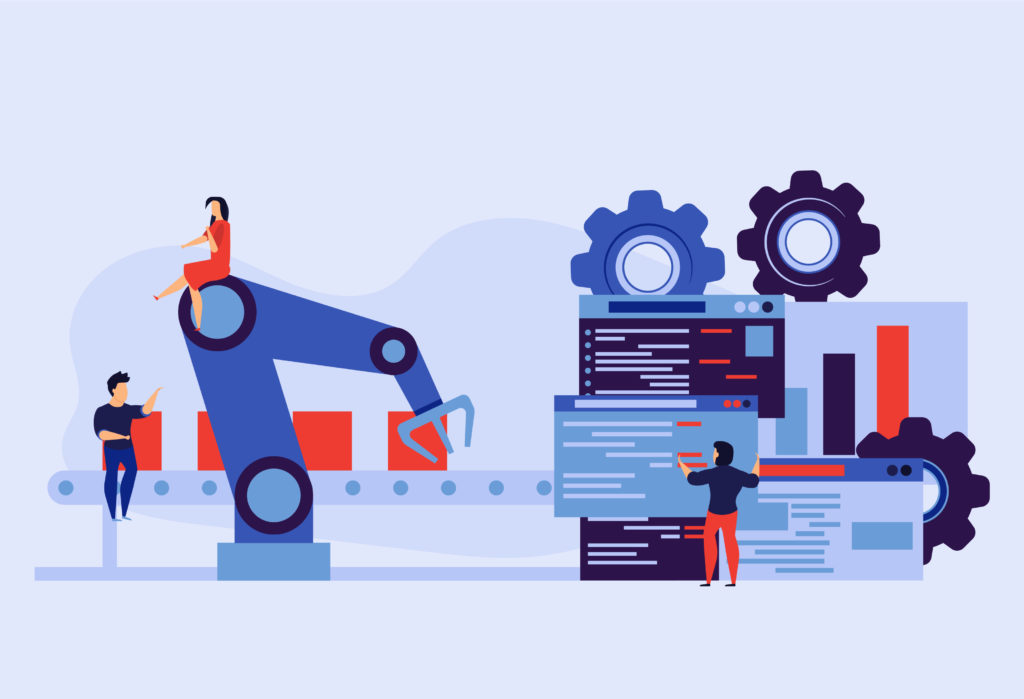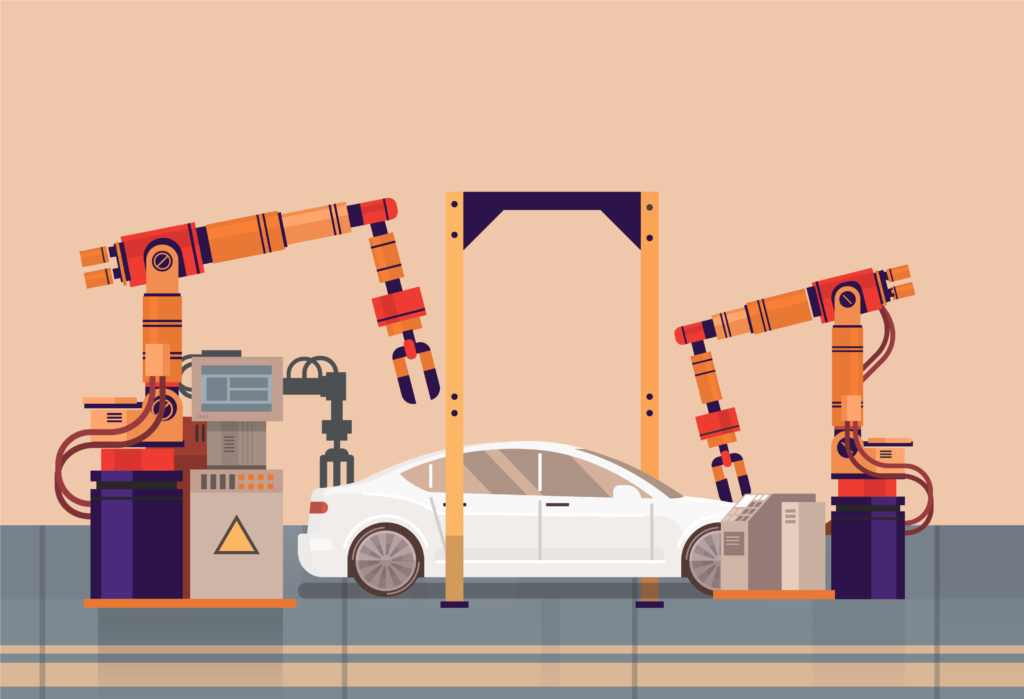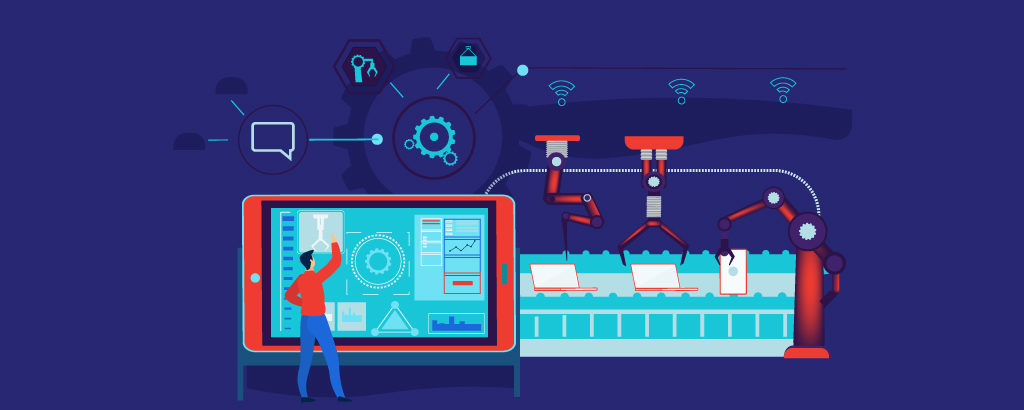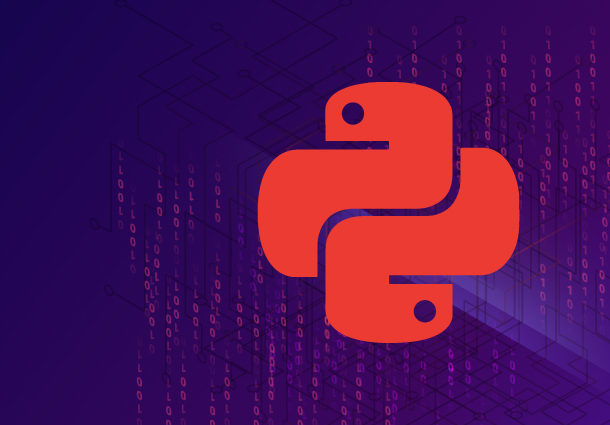Automation Revolution: Paving the Way for a Future of Boundless Efficiency
Automation is generally termed as the way you make machines or processes acting on their own. Automation would mean the process you take to make a machine, device or procedure entirely automatic. When using an Automated Kettle, you need not wait to finish every task in your kitchen by yourself. The machine would do that for you. While washing your clothes using the washing machine, you just need to give if you want to rinse or spin. The machine would know what has to be done automatically if you can give your preference in a single tap.
Your automated machinery would vary in size. It can be as small as a smartwatch or as large as autonomous robots. Operating your operations would mean automating a single process or automating the entire process.
Businesses might need to automate since it can increase their productivity. The advantages of automation are many in number. Companies set their bar high when they increase their productivity level. Automation would ensure that you get lower operational variability. You compare variability directly to the productivity and quality level of your product. Another reason why you need to automate is to avoid the hazardous working atmosphere with the higher human labor cost.
The Compelling Reasons for Businesses to Embrace Process Automation
Your business has to get updated as per the moving times. It should not stop at any point in time. This has to happen irrespective of reasons. The speed of your machines is going to increase abruptly in the upcoming days. You are going to build superfast machines that can accomplish almost every process within a shorter span of time. Thus automation, as a potential investment, is going to be the game-changer for every new business. There are various advantages of automation which we cannot ignore. Businesses should seriously consider involving automation in their business, rather than depending on old school processes alone. The main reasons behind automating your business processes include:
- Reduced production costs
- Elimination of human error
- More flexible processes
- Handle labour shortage scenarios
- Cut down the unwanted expenses
- Make wiser business decisions
- Improve your ROI
If we are going to look directly into the pros and cons of automation, we can notice that automation has more positive effects compared to the loopholes. The technology is developing at an ever-growing pace. With automation, you trespass all the manual labor and reach the next level of your business. This is why many businesses are shifting towards automation in recent days.
Exploring the Mosaic of Automation: Different Types and Their Remarkable Advantages
You can classify your automated production systems into three categories:
What do you mean by Fixed Automation?
This is one of the most commonly used types of automation. In this system, the configuration of the equipment would be fixing the sequence of assembly or processing operations. It is quite simple. The coordination and integration involving many such operations into single equipment would make the system quite complex.
These are the most commonly used features involved in fixed automation:
- The high initial investment you put for custom–Engineered equipment;
- Increased production rates
- More inflexible to accommodate different product changes.
We refer to this automation type as hard automation. It would refer to an automated production facility where we fix a sequence of processing operations by the equipment configuration.
The majority of the time, we contain the programmed commands in different cams, wiring, gears, and hardware. We do not change the programming style from one product style to the next.
The initial investment and production rates must be comparatively higher. This is only suitable for larger volumes.
A fixed automation process would be involved in products with higher demand rates and quantity. The initial cost you are going to spend might be high. The unit cost might be attractive in comparison to the other production methods. These systems are known to use Multipurpose CNC machines and Automated Guided Vehicles. Some examples of fixed automation include Batch processes, automated assembly machines, chemical processes, and Job shops. This is used in soft variety so that the changeover required might be very less between different styles.
A Comprehensive Insight into Programmable Automation
In these different types of automation, we use programmable automation when we use flexible operation sequences and machine configuration with the aid of electronic controls. But we might need more programming effort to reprogram them. We invest less on programmable equipment since the production process does not usually change. We use it mostly in the Batch process where we involve extremely low job variety and the product volume is from medium to high. We tend to use this in mass production processes too. Using programmable automation, you can change the operation sequence to let it accommodate different configurations involving the product.
 Here are a few advantages you get while involving programmable automation:
Here are a few advantages you get while involving programmable automation:
- Investing high in general-purpose equipment
- Lower rates of production compared to fixed automation
- More flexibility to deal with different changes in the product configuration
- Way more suited for batch production
This type of automation would involve products that are made up in batch quantities. The quantities would range from a few dozens to thousands at a particular time. But you should make sure that you reprogram every production unit in this phase. As mentioned above, the rate of the production is quite lower compared to fixed automation since we have designed the equipment to facilitate the changeover of the product rather than its specialization. Even though reprogramming and changeover would take some time to get over, it has a nonproductive time period that is followed by a production run involving each new batch. We code the program in the computer memory for different product styles.
We use automated production systems to program more during low as well as medium production. We make the products or parts in batches usually, while involving this method. When we want to produce every new batch involving a different product, we should reprogram the system using the set of machine instructions that correspond to the new product. We should also change the physical setup of the machine. You should load the tools, attach the fixtures and you should change the machine settings before you enter it. The procedure to change over would take more time.
You should load more tools, attach more fixtures to the machine table and the entire process would consume your bandwidth. As for the given product cycle, it would require more time to set up and ensure that the reprogramming is going on. Following this, batch production would take place. Some of examples in programmed automation include automated, industrially controlled robots with numerical machine tools.
Unraveling the Key Aspects of Flexible Automation
Flexible automation does not have the drawback of programmable automation. The drawback is the time it takes to reprogram and change the production equipment meant for each new product’s batch. The lost production time is quite expensive. Since the product varieties are very less over here, you can handle the equipment changeover in a quick and automatic manner. The entire reprogramming process is done in offline mode. You need not make it look more complicated. You can get everything done easily when you have the right automation software by your side. You can automate your entire task without needing to keep pondering over what has to be done. Everything would be updated automatically. We accomplish the programming without involving any production equipment. We need not combine any identical products into different batches. As the name suggests, the process is more flexible here. The flexible automated system would involve the one that produces more products or parts. There is no time loss over here while changing over from one product to the other. When you reprogram the system or alter the setup physically, you are not going to experience any production loss. The flexible automation would hold the following features: 
- Higher investment meant for a customized engineering system
- Mid-level production rates
- Continuous production involving different product mixtures
- More flexible to deal with variations in the product design
These are the features that are going to separate flexible automation from programmable automation: You can change part programs without any loss in production time. You can make changes in the physical setup without any loss in the production time
The features involved would allow you to automate your production system. This would ensure continuous production with no downtime between different batches. We do not consider it as a part of programmable automation. We generally change the part programs by creating offline programs on a PC. Then we electronically transmit the programs to the different automated production system. The advances in different computer systems and technologies would be completely responsible for the capability to program. To change the physical setup between different parts, you can make the changes offline and then move it to different places simultaneously since you come across the next part to complete the process.
When you are using pallet fixtures to hold different parts, transferring it into position at different workplaces is one among the ways you can implement the approach. To ensure that these approaches are a success, you need to leverage the best methods available in the market. Among other different types of automation, this method is more commonly used in factories.
The Rise of Integration: Unveiling the Trending Phenomenon of Integrated Automation
This is the latest among the types of automation. These involve all the latest technologies in Automation. This is not just about AI or RPA or Analytics. It is the combination of RPA, AI and Analytics. We do not solve the system or business problems using a standalone technology. We use a combination of technologies to get it sorted out. This is where Integrated Automation comes into play. Some of the places where it plays a huge role are in improving the overall capability of the business and enabling cognitive vision and mission. With this automation process, you can increase your business credibility to the next level.
The mortgage industry could be the best point to focus on our integrated automation platform. After a decade passed after the global financial crisis, the US mortgage industry is getting more regulated soon to protect its customers. The complexity of the process and the associated costs have become more. Considering the number of documentation and data validation we require to process from origination to services, automation would seem like an obvious opportunity. When you have unstructured and inconsistent data in your mortgages, it would get harder to use different tools like RPA.
With the dawn of digitalization, businesses are looking for better opportunities in all aspects. There is also the new concept called digital twin. The digital twin involving production activities are becoming more popular nowadays. This would help businesses of any sizes to flourish.
This Integrated Automation Software holds an appealing and attractive user interface. This has been in demand in the market for a few days.
Some of the examples of Integrated Automation Software include:
- PLC/HMI application development and integration
- VB related projects
- Integrate and program for Servo, VFDs using a control system
- Recommendation and integration of technology
- The interface of different control devices
Enhanced, excellent, and sustainability- The faces of automation
Despite the most heard buzz that automated robots would be replacing manual workers, many automation experts are of the idea that machines can actually improve our productivity level, free us from the most boring, tedious, and time-consuming tasks. This would allow us to produce more quality work. Hence automation should be considered as a boon, rather than as a bane. With automation taking your business to the next stage, you can only expect it to win. This would help you to build your own products in a shorter span of time.
Automation software development solutions have always helped us to improve productivity, superiority and business revenue. It has its own impact in every industry, thus allowing everyone from mechanical engineers to plant manufacturers to get the best benefits. You get more consistent results when you involve automation. This is one of the most celebrated advantages of automation among the industry circle.
Why do you need the support of Pattem Digital?
Are you in search of the finest industrial automation company? We are here to simplify your automation challenges, enabling the creation of innovative automation products that will set you apart in the industry. Our goal is to consistently deliver outcomes that are not only effective but also surpass your previous experiences.
As a trusted provider, we offer a wide range of highly sought-after services to our clients. Our collaborations with top multinational corporations and Fortune 500 companies worldwide have enriched our expertise and knowledge.
Rest assured, we will guide you on the path to success. If you are eager for additional services, please inform us. We are ready to cater to your needs and exceed your expectations!


